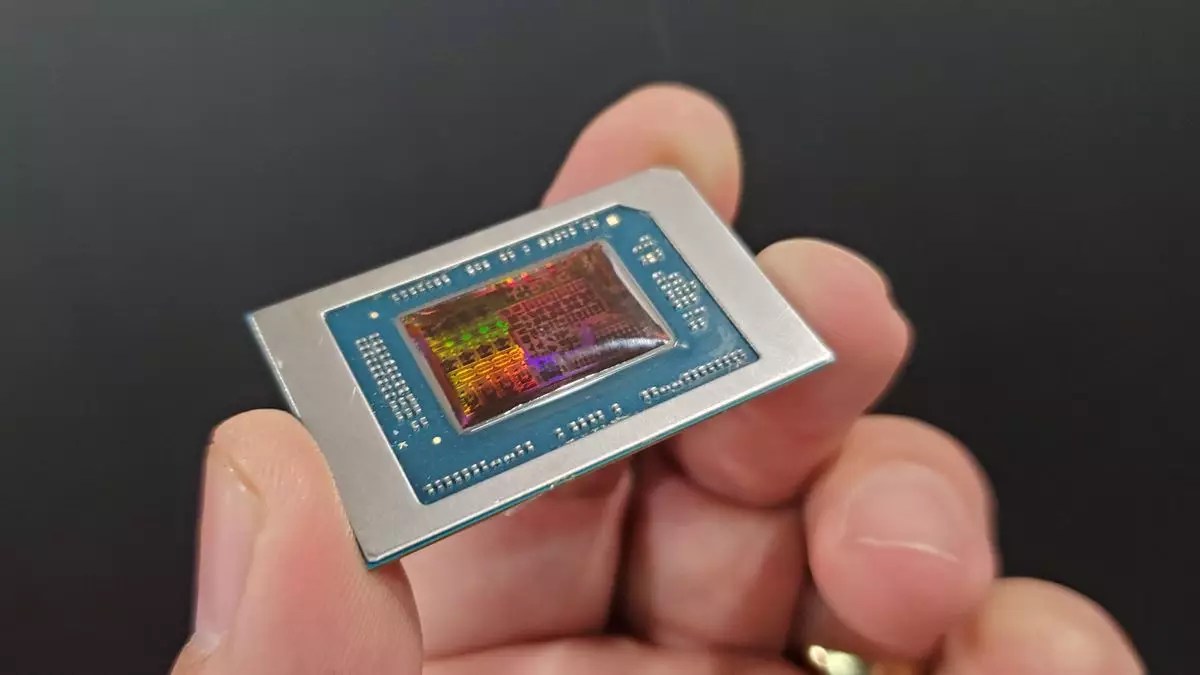AMD’s Strix Point APU is rapidly gaining attention as a high-performance chip for laptops and handheld gaming devices. Devices like the Razer Blade 16 and the OneXPlayer OneXFly F1 Pro have already showcased its versatility. However, the discussion isn’t limited to mobile computing; whispers about its desktop counterpart, the Ryzen 9000G, spark excitement among those craving ultra-compact computing solutions. Slated for potential release in Q4 2025, this chip isn’t just an evolutionary step; it’s a promising leap towards integrating powerful computing into even smaller hardware.
Strix Point’s Technical Marvels
At the heart of Strix Point lies impressive technology designed for both mobile and future desktop applications. It features up to 12 Zen 5 architecture-based CPU cores, a combination of four full Zen 5 cores and eight Zen 5c cores, which hints at a solid balance between performance and efficiency. On the graphical front, it comes equipped with 16 RDNA 3.5 compute units and an AI-optimized NPU, capable of 55 TOPS. Such specs suggest that the APU is tailored for both productivity and entertainment, making it an enticing option for a wide range of users.
For desktop aficionados, the intriguing prospect of this technology being integrated into the AM5 socket format raises curiosity. The compatibility with a variety of existing AMD motherboards facilitates an easy upgrade path for enthusiasts looking to transition to the innovative Strix Point architecture without significantly overhauling their setups.
Performance Expectations: Laptop vs. Desktop
Anticipating the performance of the desktop version of Strix Point naturally leads to excitement. Given that laptop versions are often constrained by thermal and power limitations, it is reasonable to expect that the desktop iteration could unlock higher clock speeds and improved performance metrics. While it may offer a blend of CPU and GPU prowess, users seeking the optimal performance in gaming or heavy computational tasks are likely to lean towards a dedicated desktop CPU and GPU combination.
Nevertheless, Strix Point’s advantages are significant—especially in compact desktop solutions. For instance, devices like the Ayaneo Retro Mini PC AM01S underline the practicality of fitting robust technology into a small form factor, catering to casual gamers and productivity users alike.
Understanding Target Audience and Market Position
While some may wonder whether AMD’s venture into compact desktop solutions can compete with traditional high-performance systems, it’s crucial to identify the target market. Strix Point is not positioned as a gaming powerhouse but rather as an efficient, versatile chip ideal for a ‘one-stop-shop’ computing solution. For users who value compactness and ease of use over heavyweight performance, this APU addresses a sweet spot currently underrepresented in the market.
The future inclusion of Strix Point in devices like the Ayaneo Retro could signal a shift for portable gaming and media consumption alike. There’s a growing demand for high-functioning mini PCs that can fit on a desk without monopolizing space while still delivering impressive performance capabilities—all qualities that AMD seems poised to deliver.
A Look Ahead: Pricing and Release Speculations
As of now, everything regarding the desktop rollout of Strix Point remains speculative. While AMD’s reputation assures enthusiasts of a quality product, the pricing, and exact launch specifics remain to be seen. Historically, desktop variants of mobile chips often offer more value, suggesting that Strix Point may appeal to cost-conscious consumers seeking powerful yet affordable computing solutions.
The ongoing debate about integrating AI within the branding of Ryzen 9000G also reflects the tech industry’s increasing focus on artificial intelligence capabilities. The likelihood of AMD reinforcing this technology into its APUs not only aligns with current trends but also offers consumers cutting-edge features that enhance their computing experience.
It is evident that AMD’s Strix Point APU packs much more than just a punch; it presents a calculated vision for the future of compact computing. With shifts towards more integrated and efficient technologies, AMD is stepping into the spotlight, ready to define the next generation of portable and desktop computing.


Leave a Reply